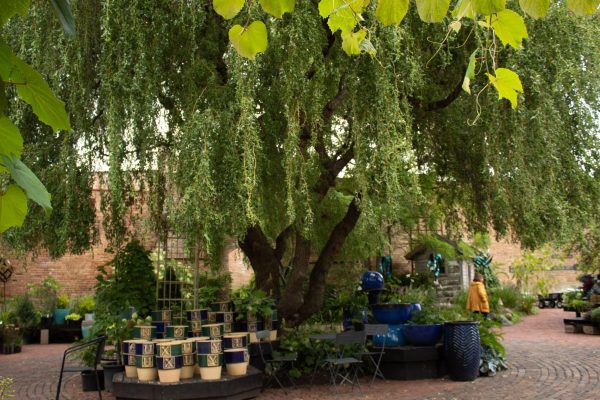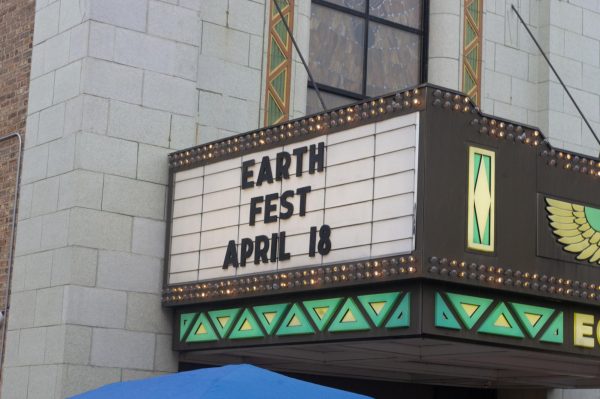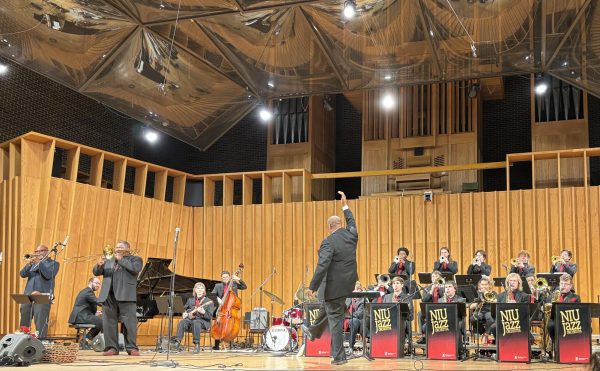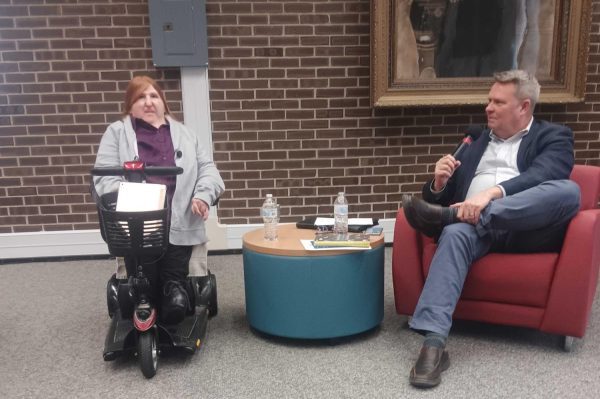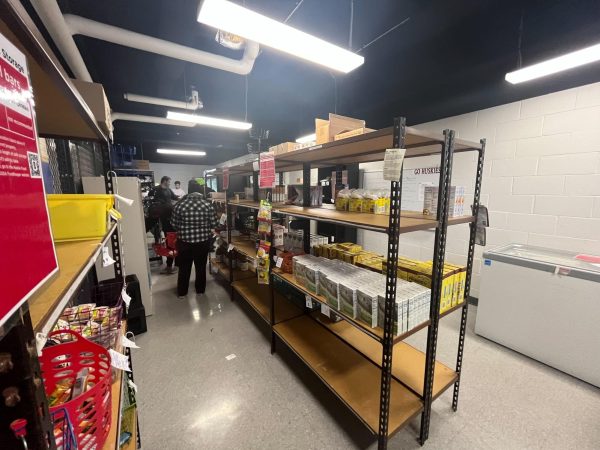Beloit International Film Festival
January 24, 2007
The festival
“Here at the Beloit Film festival, there’s three places a movie can come from: Wisconsin, the Midwest and the rest of the world,” said John Burris, president of Beloit College and presenter of the Wisconsin Feature Film Award at the Beloit International Film Festival, to wild laughter.
In Southern Wisconsin’s Second Annual Beloit International Film Festival (BIFF, for short), held Jan. 18 through Jan. 21, there were all of the awards ceremonies, soirees, workshops, popcorn stands, limo services and pomp you’d expect to find at any international film festival.
But Burris wasn’t being bold as he stood on the podium, spotlight glaring, glitter and sequins shining around him – he was speaking the truth.
There were three regional categories of films being awarded Friday night, with subcategory awards like documentary, student and animation: Wisconsin’s best, the Midwest’s best and the International best.
This is a home-grown festival celebrating home-grown independent artists on the same stage as international filmmaking superstars in a way that is more common on America’s coasts.
Filmmakers
The Beloit International Film Festival decided to house its film screenings in eight local venues, ranging from auditoriums to Mexican restaurants to factory-turned-industrial art spaces across the Beloit downtown.
Filmmakers at festivals do not have cars, and they do not have personal escorts, at least not yet. So, when they can’t catch the limo service, they walk or, for the first days of the festival, coldly amble aimlessly.
When Iris Almaraz, a filmmaker from L.A. flown in by the BIFF, was walking, unbeknownst to her, due south, accidentally crossing the stateline into Illinois and South Beloit, she spun around, jokingly concerned.
“Oh, man, we’ve got to get back into Wisconsin,” Almaraz said, dyed-red hair blowing, cold fingers clutching her long coat. “I was told to be sure to make it to the ceremony, because you know what that means,” she said with a smile, excited at the prospect of her independently financed films getting recognition or making her the money to complete her feature film.
One does not often dwell on it, but talented filmmakers are flown away from their friends, families and neighborhoods constantly.
Lev Yilmaz, who attended the BIFF for his deadpan, animated short films, was flown back to San Francisco only to be flown out to Europe two days later for more festivals and gallery openings.
“We don’t do this for recognition from the industry, whatever that even means,” said Henryk Cymerman (“American Gothic”). “We do it so we can meet and mingle with people who love film – filmmakers and film-goers.”
And there are so many people to meet at film festivals.
One of the benefits to a smaller, independent film industry festival, especially out in the Midwest, is the camaraderie for filmmakers and the moviegoers alike.
There is less shameless self-promotion, less high-and-mightiness and more opportunities for residents to meet the filmmakers.
During the after-parties held every night of the festival, there was music, dancing, rounds of beer on the house, lovesick filmmakers searching for affection, and karaoke with filmmakers, and none of it was behind VIP doors.
Filmmakers Rory and Robin Muir of Los Angeles, whose film “Downtown Locals” has garnered recognition at nearly 10 festivals across the country, waited in the Wisconsin cold, trying to get into Beloit’s busy Hog Cabin bar to see a local heavy metal cover band.
Beloit
An hour car ride up I-90, Beloit is a town just like DeKalb.
There is a college. There is a kitschy downtown. There are the factories, though not as many anymore. There is the small-town feel of 30 to 40 thousand residents. There is the Midwestern politeness.
There is also the painful post-industrial identity crisis.
Beloit, too, is seeing its industry slow. In fact, no less than ten years ago, it completely plummeted. The identity change, thanks to a firm love of the arts that has been thriving in Beloit since the ‘50s, when it was an unlikely popular stop for traveling poets from the Beat literature generation.
When Beloit had to make the decision of whether to be one of the multitudinous dying industry towns of the Midwest, or to change its course with some help from its friends, Beloit took initiative.
With the help from Beloit local Ken Hendricks, economics professor and America’s 107th richest man, and the hard work of the residents, Beloit has turned into a small artistic haven. The film festival is proof of that.
“Before the first festival began, we anticipated 1,500 attendees,” said Rod Beaudoin, executive director for BIFF. “So, when we received 4,000 participants, we thought, ‘Well, we’ll have to do even better next year.”
Stateline Festivals, who also runs Beloit’s Riverfest, among other festivals in the Midwest, amped up the festival with Beloit College as a strategic partner and help from numerous local and corporate businesses.
They flew in more than 40 filmmakers, raised the amount of films shown to 115, hired a limo service for anyone attending the screenings, hired hundreds of volunteers from around the community, played movies in local venues, brought in jazz combos, composed music to accompany a Charlie Chaplain film by a live orchestra, and more.
Attendance rose dramatically again. The festival, still in its infancy, was rated as one of the three alternatives to the Sundance festival, with whom it shared the weekend half of the country apart
“We all wanted this festival for a lot of reasons,” Beaudoin said. “People say Beloit, Wis., is an unlikely place for an international film festival, but we’ve always been deeply invested in the arts. The attendance and enthusiasm is the proof of that a city can put itself on the map with the right help and ideas.”
The public consensus and devotion of Beloit is something to be applauded, as it was at the awards ceremony when the sponsors list scrolled down, delighting the corporate and local business owners invited to attend the international film fest they helped put together.


